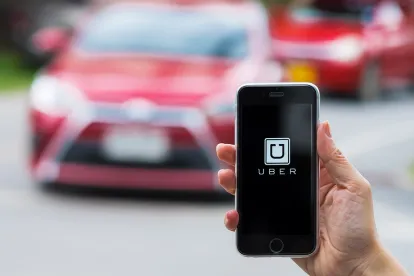On February 19, 2021, in a landmark decision that may have lasting effects on the gig economy, the United Kingdom Supreme Court unanimously ruled that Uber drivers are workers and are not self-employed contractors, and, as such, are entitled to certain rights, including minimum wage, holiday pay and rest breaks, among other benefits and protections.
Factual Background
The UK Supreme Court’s decision concludes nearly five years of litigation between Uber and a small group of former drivers. These Uber drivers entered into partner agreements with Uber to drive passengers who were located through the Uber app. The partner agreements describe the drivers as self-employed independent contractors. These drivers claimed that they were workers and were entitled to employment rights and protections. In 2016, an employment tribunal ruled in favor of the drivers. Upon appeal, an employment appeal tribunal and court of appeal (by a majority decision) agreed with the drivers that they were workers and not self-employed contractors. In each case, the tribunal/court found that the partner agreements did not reflect the actual relationship between the parties, and the agreements were disregarded accordingly.
Uber appealed to the Supreme Court, again claiming that its drivers are self-employed contractors and that Uber acts as an “agency” by connecting drivers and passengers via an app.
Supreme Court Decision
The Supreme Court dismissed Uber’s appeal. The Court did not agree that Uber was an intermediary party and instead found that drivers were workers. The Court rejected the argument, put forth by Uber, that the terms of the partner agreement are dispositive when deciding worker status, and concluded that the contractual terms should not be the starting point in determining whether individuals should be defined as workers. The Court reasoned that such terms may prevent individuals from being eligible to receive statutory workers’ rights, because employers may unilaterally dictate contractual terms for vulnerable workers, thereby depriving them of their employment rights.
As opposed to reviewing the contractual terms, the Court analyzed the factual background in light of the statutory language and legislative purpose. The Court stated that the legislative purpose is to protect vulnerable workers from (i) being paid too little for the work they do, (ii) working excessive hours and/or (iii) being subjected to other forms of unfair treatment (such as being victimized for whistleblowing). Part of the assessment also includes analyzing the degree of worker subordination and dependence upon employers and the degree of control exercised over individuals’ work.
To arrive at its determination, the Court considered several elements:
-
Uber set the fare, which meant that Uber dictated how much money drivers may earn;
-
Uber set the contract terms unilaterally, and drivers had no ability to negotiate;
-
Uber constrains ride requests, and Uber may penalize drivers if they reject too many rides; and
-
Uber monitors drivers’ service through the star rating and may terminate the drivers’ relationship with Uber if drivers’ performance does not improve after repeated warnings.
After reviewing these factors, the Court found that the drivers were indeed workers. Drivers were in a position of subordination to Uber and drivers could only increase their earnings by working longer hours. Put differently, Uber exercises significant control over its drivers’ work, rejecting Uber’s argument that it simply facilitates transactions between drivers and passengers.
In addition, the Court stated that drivers should be considered working not only when driving a passenger, but also whenever they are logged in to the app. This is a significant finding because Uber drivers typically spend time waiting for individuals to book rides on the app. The Court ruled that drivers’ working time is not limited to the time when a passenger is in the car.
The case now returns to the employment tribunal, which could order Uber to pay compensation to the group of original claimants.
Practical Effect on the Gig Economy
Because this litigation was filed in 2016 and only concerned a small number of Uber drivers, it is unclear whether this verdict will have far and wide-reaching implications. This is the case because Uber believes that it has made significant changes to its business since 2016. Uber has stated that (i) it provides drivers with new protections such as free insurance in case of sickness or injury and (ii) drivers now have more control over how they earn money.
This ruling, however, may make it more difficult for employers to engage individuals via digital platforms and to assert that they are self-employed contractors, despite contractual documentation that may state otherwise.
Litigating drivers’ employment classification status is not new for Uber, as similar lawsuits have been and continue to be filed across the company’s global operations. In Uber’s home state of California, for example, drivers have sued to invalidate a ballot measure (Proposition 22) that was approved last year and exempted Uber and other gig economy platforms from reclassifying drivers as employees. In the European Union, policy makers are expected to publish recommendations for improving working conditions for gig-economy workers in the coming weeks.
Whether this Supreme Court decision sets precedent for other workers and employers in the gig economy throughout the United Kingdom and European Union remains uncertain, especially because the underlying legal analysis is highly fact-sensitive.



 />i
/>i

